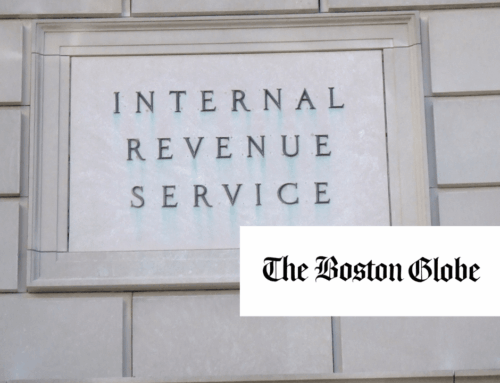Ah, the Highway Trust Fund (HTF). An entity so American, it might as well have been sculpted from apple pie. On October 18, the Congressional Budget Office (CBO) graced us with its analytical prowess, dissecting the HTF’s looming financial chasms, during a riveting episode before the Subcommittee on Highways and Transit. And let us be clear: the prognosis isn’t pretty.
The HTF, a venerable institution born from Eisenhower’s vision in 1956, is once again racing toward insolvency. Once robustly maintained by taxes on motor fuels, it’s projected to see a 1 percent decline in annual revenues over the next decade. Blame it on fuel-efficient cars or our collective aversion to driving more, but here we are.
For two decades, our gasoline, diesel, and motor fuel excise taxes, originally intended to finance this highway extravaganza, have proven woefully inadequate. The excise taxes haven’t been adjusted since the dawn of grunge music in 1993 and are set to drop even further in 2028.
Cue the Treasury’s general fund, which has been filling this gaping hole. And according to current projections, the trust fund will again skid into bankruptcy by 2028, with a shortfall spiraling to $241 billion over the next decade. To simply maintain our highways at their 2016 glory, we’d need to shell out an average of $61 billion annually from 2024 to 2033. Aiming higher, to fund all beneficial projects, would raise that ticket to $99 billion per year. How’s that for fiscal prudence?
The conversation inevitably leads us to the Vehicle Miles Traveled (VMT) tax. An innovative yet divisive proposal, it has its merits and demerits. On one hand, it’s egalitarian, charging all vehicles for their use of our asphalt Eden, irrespective of their ecological virtues or fuel source. On the other hand, the idea is tangled in the brambles of administrative burden and fraught with privacy concerns. Must we trade our anonymity for well-maintained roads?
Oregon introduced a voluntary VMT program called OReGO in response to declining road and bridge maintenance funds from reduced fuel consumption. Launched by the Oregon Department of Transportation on July 1, 2015, the program charges participants 1.9 cents per mile driven on Oregon roads, with the revenue directed to the State Highway Fund. In return, participants get a credit for the fuel tax they pay, currently at 38 cents per gallon. Originally capped at 5,000 vehicles, the 2019 Legislature expanded the program to allow unlimited participation.
Lower-income and rural families could also bear a disproportionate cost of a VMT. Why not narrow the scope, perhaps? Why not limit the VMT tax to commercial trucks, which are already tracked like migratory beasts? This only gets you part-way there, but it’s progress.
The CBO has studied the possible income from a federal VMT tax for commercial trucks. In 2017, if a 1 cent per mile tax was placed on all commercial trucks with a 90% compliance rate, it would have brought in $2.6 billion. The Tax Foundation estimated that a 5-cent per mile tax on these trucks could have generated $4 billion to $13 billion in the same year. For reference, the HTF received about $41 billion in revenues and had $54 billion in outlays in 2017.
Congress’s last foray into this territory came in 2021 with the Infrastructure Investment and Jobs Act that carried the five-year surface transportation reauthorization and included a $275 billion injection from the general treasury to the HTF. The larger problem is this: detaching user charges from fund allocation isn’t just a fiscal faux pas; it’s a fundamental distortion of the user-pays principle that’s guided our highway spending.
The taxation structure of our highway system, pretty much unaltered since the days of Reagan’s increase to nine cents per gallon, is falling behind the times. And there is something innately unsettling about the HTF’s budgetary status. The fund dances between categories, neither wholly discretionary nor entirely immune to spending caps. This quasi-dual nature begets confusion, and where there’s confusion, there’s usually waste.
So where should we go from here? We have some thoughts. First, let’s ensure the HTF is self-financing. No more siphoning off the general funds. Second, if you benefit from the roads, you should contribute to their upkeep—plain and simple. Third, let’s zero in on waste and focus spending on high-impact projects. Fourth, let’s look at other revenue sources—like tolls. And finally, let’s require states repair existing infrastructure before expanding. That last point was a highlight in our 2019 report with Transportation for America titled, Repair Priorities, where we also advocated for measurable outcomes, affordability requirements, and further transparency from the Federal Highway Administration. These are common sense reforms that will improve American infrastructure while remaining fiscally responsible.
The bottom line is that the HTF has been facing a looming insolvency crisis for years. Since 2008, the fund has consistently spent more money than it has received, leading to a reliance on transfers from the general treasury fund to remain solvent. This reliance on general treasury funds has amounted to over $140 billion in transfers since 2008.
The insolvency issue is exacerbated by the fact that the federal gas tax, which is the main source of revenue for the HTF, has not been raised since 1993 and has not kept pace with inflation. Additionally, the increasing fuel efficiency of vehicles and the growing popularity of electric vehicles have contributed to a decline in gas tax revenue.
This history of relying on the general treasury fund to stay solvent highlights the need for reforming how the Highway Trust Fund is funded, as the current model is unsustainable and inadequate to meet the demands of maintaining and improving the nation’s transportation infrastructure. At the end of the day, we need a solution that merges fiscal responsibility with the realities of modern American life. Anything less is a road to nowhere.











Get Social